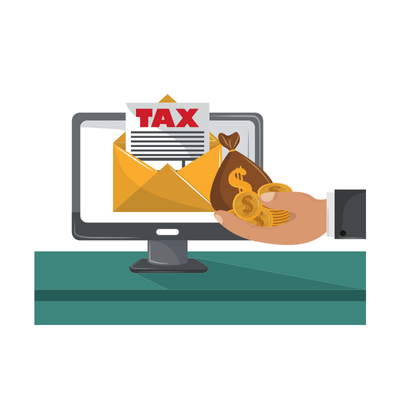In today’s digital world, businesses rely on data more than ever. One important type of data is GST sale or purchase data. This kind of information helps businesses stay on track, follow the rules, and make smarter decisions.
Whether you’re running a small store or a large company, GST data plays a big role. It shows your sales, your expenses, and your taxes. Most importantly, it helps you stay in control of your business.
What Is GST Sale or Purchase Data?
Let’s keep it simple. GST sale data shows what your business sells. it shows what your business buys.
Together, this information helps in:
Filing GST returns
Tracking profits and losses
Managing expenses
Knowing which vendors or buyers to trust
Every time you sell or buy, it’s recorded under GST. That’s why it’s important to track it properly.
Why Gst sale or purchase data Matters for Every Business
Now, you might ask, “Why should I care about this data?”
Well, here’s why it matters:
You can file your GST returns easily
It avoids mistakes in tax payments
It gives you a full view of your income and spending
It helps spot fake or wrong invoices
With this you get a clear picture of your business health. You also stay ready for audits or checks.
Tracking Gst sale or purchase data the Right Way
Keeping your data clean and simple is key. But many businesses still struggle with this. Some forget to record small purchases. Others don’t match their sales data properly.
Here are a few quick tips:
Record every sale and purchase on time
Match purchase data with supplier invoices
Recheck sales data before filing returns
Use GST-compliant software for better accuracy
By doing this, your GST reports stay correct, and your records stay strong.
Boost Business Insights with Gst sale or purchase data Details
GST sale data is not just for filing returns. It also shows your business trends.
For example:
What products are selling the most?
Which months have the highest sales?
Are your buyers returning regularly?
When you read your GST sale records, you begin to understand what’s working and what’s not. That way, you can plan ahead and grow faster.
Understanding Your Buying Habits Through Gst sale or purchase data
On the other side, GST purchase data tells you about your spending.
Look at it carefully and ask yourself:
Am I buying too much stock?
Are my suppliers billing me correctly?
Can I save money by changing vendors?
This small check helps you reduce costs, avoid GST mismatches, and save money.
Keep Errors Away with Clean Records
Even small mistakes in this can lead to trouble. Wrong amounts, missing invoices, or unmatched entries may result in notices or penalties.
So how can you avoid that?
Double-check each invoice before entering
Cross-check GSTR-2A or GSTR-2B regularly
File returns on time
Reconcile sales and purchases monthly
Doing this doesn’t take long—but it saves you from big issues later.
A Smart Way to File GST Returns
Filing GST returns becomes smooth when your sale and purchase data is ready. You don’t need to rush at the last minute or worry about mistakes.
Steps to make it simple:
Maintain clear records daily
Use software or tools to compile reports
Match your books with GST portal data
Fix errors before filing
Submit returns without stress
With clean Data, return filing becomes quick and stress-free.
Know Your GST Status at Any Time
Many businesses don’t know their exact tax status. That’s where this data helps.
When your sales and purchase records are in place, you can see:
Total tax collected
Total tax paid
Pending credits
Any GST mismatch issues
This gives you full control. No surprises, no sudden dues. Just clear numbers.
Use Gst sale or purchase data to Spot Gaps and Opportunities
It doesn’t just tell you what happened. It shows what you can do next.
Maybe you find that certain vendors often send wrong bills. Or maybe your best sales come from one product. These small things can lead to big decisions.
That’s the power of data—it shows you where you can grow.
Staying GST Compliant Gets Easier
Once your sale and purchase data is sorted, staying GST-compliant becomes simple.
You’ll never miss a deadline. You’ll avoid notices. And your business will build trust among vendors, buyers, and tax officials.
Good data = good business.
Watch for Red Flags in Gst sales or purchase data
Sometimes, GST data reveals problems you didn’t notice. For example:
Sales shown but no GST paid
Purchases with no GST input
Invoices that don’t match portal data
Don’t ignore these signs. Fix them early. Staying alert keeps your business safe.
How to Make the Most of Your GST Records
Here’s how to make your data work for you:
Reconcile every month
Avoid fake invoices
Track your GST input and output regularly
Use data for better planning and reporting
Stay updated with GST rule changes
When you treat your data like a business asset, you get real results.
Final Thoughts: Turn GST Data into Business Power
GST sale or purchase data is more than just tax numbers. It’s a tool to run your business better.
By keeping your records clear, checking them regularly, and using them wisely, you can:
Avoid mistakes
Save money
Stay compliant
Grow your business faster
So don’t just collect GST data—use it. Let it guide your plans and keep your business strong.
Your next big business move might already be hidden in your GST records.
Our other related articles :
1.Who provides gst sale purchase data access?
2.Who uses gst sales purchase data in india ?
3.Who collects gst sales purchase info online?

